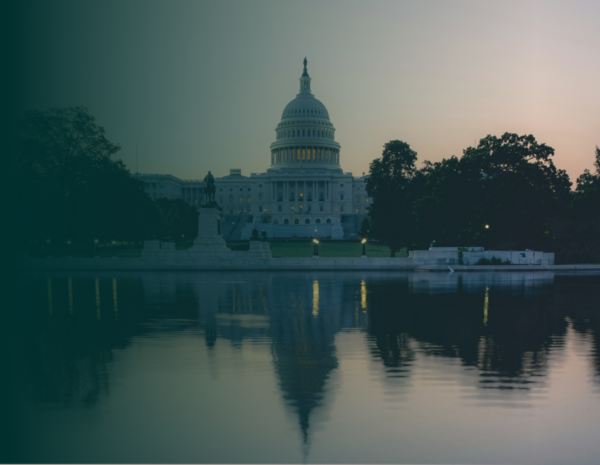For advocacy groups, big data research is key. Advocacy groups now have the opportunity to tap into this vast well of data to shape policy. Learn more today!
“Big data” refers to large, complex datasets that can be difficult to manage with traditional methods. Three V’s characterize big data:
- Volume: Big data is high-volume, meaning there is a lot of it and it’s hard to process.
- Velocity: This data is generated at high speeds. It may even be continuously updated in real time, allowing faster discovery of changes and trends. Machine learning, deep learning, and artificial intelligence tools can recognize patterns and make real-time predictions.
- Variety: There are many data types and formats, including text, audio, and video. Big data may include social media posts, wearable device data, transaction records, satellite images, scientific equipment readings, and more.
For advocacy groups, big data research is key. Big data research can uncover trends, patterns, and connections that traditional data analyses may miss. Data scientists can mine big data to create forecasting models that allow them to make predictions based on past trends.
Big data isn’t new, but new tools and services have begun to make big data research easier. Advocacy groups now have more opportunities to tap into this vast well of data to help shape policy.
Applications of Big Data Research in Advocacy Work
Advocacy organizations are scratching the surface of what big data can accomplish. Big data can be used to create data-driven campaigns and policies, generate impactful visualizations and detect trends in real-time. It can even predict the future.
How Big Data Can Shape Policy Work
Advocacy organizations can use data analytics to create evidence-based arguments in support of their policy positions. Big data research can help identify where a need or inequality exists. It may even uncover unexpected connections that are otherwise difficult to predict.
Big data also can support evidence-based actions that meet a need or solve a problem. This type of evidence traditionally comes from research studies or surveys designed to demonstrate cause and effect. Larger data sources can demonstrate patterns and trends that reinforce or add context to these findings.
Data science professionals can create models that predict future scenarios. This predictive data helps direct advocacy efforts to emerging needs. For instance, climate modeling uses past and current data to forecast climate change, sea level rise, arctic ice loss, and more. Researchers have also used big data to predict disease outbreaks and the progression of epidemics or pandemics.
Nonprofits and advocacy groups can use data visualization tools to communicate complex findings in an easy-to-digest manner. Well-designed maps, charts, and graphs can help policymakers and the public understand a problem and why certain actions could help solve it.
Alleviating Concerns Around Big Data
With large amounts of data tracked in people’s daily lives, privacy is a growing concern. Many sources of big data anonymize and/or aggregate their data. These processes are designed to make it difficult to identify individuals. However, with a very detailed dataset, doing so is sometimes possible.
To prevent this, advocacy groups should handle data responsibly. Steps should be taken to ensure they aren’t making unnecessary details public. Organizations with an interest in privacy may want to keep track of big data research to identify where policy could create better protections.
Using Big Data Research to Shape Your Advocacy Strategy
Big data also can impact the strategies employed by advocacy organizations to achieve their goals. For example, data derived from social media activity could be used to spot relevant trends and target campaigns to the right audience.
Before that can happen, they need to set a big data strategy and have the knowledge to implement it. What does your organization want to achieve or learn with big data? Will you have people on staff who are trained in data analysis and data science? These questions can help advocacy groups decide when and how to move forward with big data research.
Accessing, storing, and processing big data can all present challenges to nonprofit organizations. Organizations can buy software tools like Hadoop and set up infrastructure to help manage big data. They also can pay for Big Data as a Service (BDaaS) to manage it on the cloud. In addition to large storage and processing capabilities, these services can include tools for analytics, visualization, predictive analysis, and more.
Amazon, Google, and Microsoft are the largest companies offering cloud-based big data services. They each also host data marketplaces where you can find big data sources related to your organization’s work. There are also several publicly available data sources you can use to get started. This includes data.gov, an open data website run by the United States government.
Case Study: Advancing Health Equity Through Big Data Research
One field where big data has great potential is healthcare. Hospital systems and medical researchers are using big data research to learn more about health trends and improve medical interventions. When is shared with other organizations, this data can be used to shape policy and advocacy campaigns.
Some researchers are working to help advance health equity. They may study social determinants of health, which are non-medical factors that impact health outcomes. By combining data from electronic health records with other big data, scientists can learn more about why some populations have worse health outcomes or greater disease risks than others. They can also gain more insight into differences in how people respond to treatments. These efforts can identify systemic issues and help improve the care patients receive.
In 2018, Sutter Health used real-time data from electronic health records alongside other statistics to create a health equity index (HEI). With the HEI, medical providers can tailor interventions and measure their effectiveness. They can also uncover bias and inequalities within the system. For example, Sutter Health found that doctors prescribe medication for pain relief disproportionately along racial lines. No explanation for this behavior was found, suggesting possible racial bias in treatment.
Big data’s applications in medicine extend beyond healthcare systems. The Big Data for Health Equity collaborative works to advance the use of big data for health equity research. They have developed a deep learning model that can detect racial sentiment and expressions of prejudice from social media posts. Using this and other methods, they investigated how changes in racial attitudes are associated with changes in adverse birth and other health outcomes.
Big data research has the potential to transform health-related advocacy, along with many other fields.
Get Started With Plural
Plural is the policy tracking and legislative intelligence tool of choice for organizations seeking to monitor privacy policy and big data regulation. With Plural, you’ll:
- Access superior public policy data
- Be the first to know about new bills and changes in bill status
- Streamline your day with seamless organization features
- Harness the power of time-saving AI tools to gain insights into individual bills and the entire legislative landscape
- Keep everyone on the same page with internal collaboration and external reporting all in one place
Book a consultation today!
More Resources for Public Policy Teams
Guide to Preparing for Congressional Testimony
Effective preparation for Congressional testimony requires a meticulous blend of strategy, knowledge, and execution. Download now!
Government Affairs Strategy Guide
This government affairs strategy guide equips your team with insights and tips to navigate interactions with government. Download now!
Georgia’s 2023-2024 Legislative Session: End-of-Session Report
Georgia legislators wrapped up their 2023-2024 legislative session early on Friday, March 29th. The adjournment brought to a close a session that was closely followed both nationally and by those within Georgia. Read our analysis.



